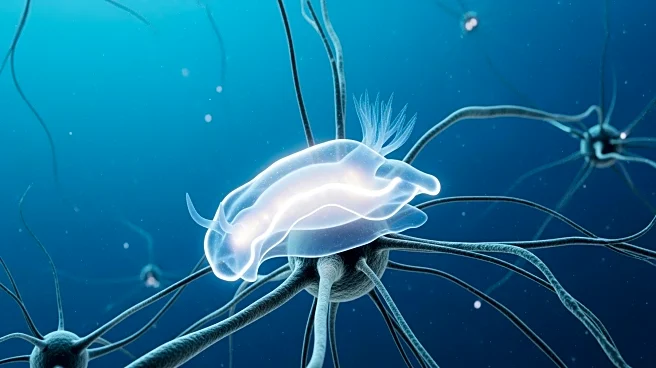What's Happening?
Scientists at the National University of Singapore (NUS) have identified a DNA 'switch' that enables tropical butterflies to alter the size of their wing eyespots based on seasonal temperature changes. This discovery sheds light on the evolutionary mechanisms
behind environmental sensitivity in insects. The research, led by Professor Antónia Monteiro, focused on the African butterfly species Bicyclus anynana, which exhibits larger eyespots during wet seasons and smaller ones during dry seasons. The study, published in Nature Ecology & Evolution, highlights the role of the Antennapedia (Antp) gene, which varies in activity depending on the temperature at which the butterflies are raised. A unique DNA promoter found only in satyrid butterflies was identified as crucial for this seasonal adaptability.
Why It's Important?
The findings from this study have significant implications for understanding how organisms adapt to changing climates. By pinpointing the genetic mechanisms that allow butterflies to adjust their physical traits in response to environmental changes, researchers can gain insights into broader ecological and evolutionary processes. This knowledge could be pivotal in developing strategies for conservation efforts, particularly as global temperatures continue to fluctuate. The ability to manipulate such genetic switches might also offer new avenues for enhancing the resilience of species facing climate change.
What's Next?
Future research may explore the potential applications of these genetic findings in conservation biology. Scientists could investigate whether similar genetic switches exist in other species and how they might be leveraged to support adaptation in various ecological contexts. Additionally, understanding the genetic basis of environmental sensitivity could inform breeding programs aimed at increasing the resilience of species vulnerable to climate change.
Beyond the Headlines
The discovery of a simple genetic switch influencing complex environmental sensitivity underscores the intricate relationship between genetics and ecology. This research not only advances scientific knowledge but also raises ethical considerations regarding genetic manipulation in conservation efforts. The long-term implications of such interventions on biodiversity and ecosystem balance warrant careful examination.













